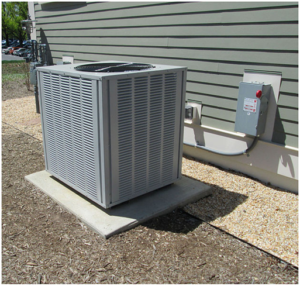Here is a guide to help you understand some basic components and principles of your air conditioning system.

Components in or near the AHU
Air Handler Unit: The blower fan, heater, compressor, cooling coils, and other components are usually housed together inside one indoor or outdoor AHU. Split systems have matching components both outside and inside the building.
Condensing Unit: A compressor moves refrigerant gas through the system to cool in the condenser. Refrigeration units also contain reversing valves, receiver vessels, filter-driers, oil separators, oil traps, suction lines, and accumulators.
Evaporator Coils: These absorb heat by allowing fluids to evaporate. They are found in heat pumps and heat exchangers.

Filters: A variety of air filters are usually fitted in or near the AHU. Specialized types include HEPA and activated charcoal.
Heat Pumps: These use heat exchangers to exchange heat with the environment, warming or cooling internal air according to prevailing weather conditions and building requirements, thereby saving energy.
Refrigerants: These are fluids that readily change from liquid to gas to produce a cooling effect. Refrigerants are heavily regulated because of environmental dangers. The correct charge (quantity) is important because too much and too little both cause problems.
Ductwork parts
Airflow devices: These include dampers, registers, diverter vanes, grilles, and room vents. Together they optimize the volumes and directions of airflow. Different zones of the building can be conditioned independently.
Measuring devices: Sensors and controls include thermostats and thermostats to adjust temperatures and humidity, manometers and pitot tubes to monitor pressures, and psychrometers to measure humidity. Humidity can be calculated by comparing thermometers with wet and dry bulbs.
Plenum: This is the central junction for all distributing and returns ducts. A well-designed plenum distributes optimum airflow and temperatures to different zones of the building.
Steel ducting: Galvanised and stainless steel spiral ducting are light, easy to cut, and quick to connect. You can see basic ductwork parts at https://www.dustspares.co.uk/ductwork-parts/.
Measurement terms
British Thermal Units: This is a unit of heat output. An MBH is 1,000 BTU per hour.
Coefficient of Performance (COP): Clear measures of performance help you minimize costs and comply with energy efficiency legislation.
Effective temperature: How warm or cold it actually feels after temperature, humidity, and air movement are all taken into account.
Seasonal Energy Efficiency Ratio: SEER is a measure of heat pump and air conditioner efficiency.





